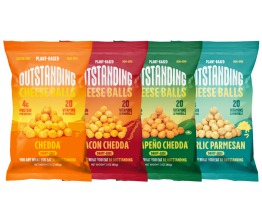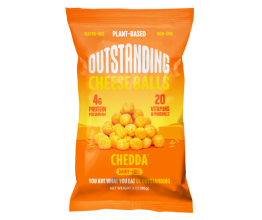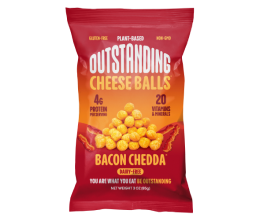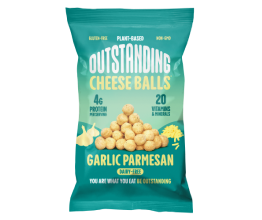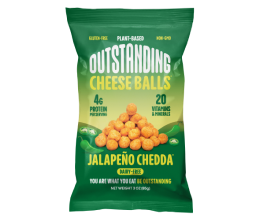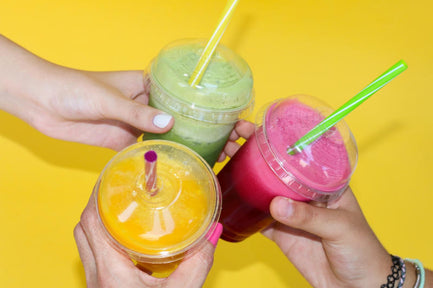Non GMO vs. Organic: What’s the Difference?
We’ve all seen it. You’re walking through your local grocery store and turn down the next aisle. You nearly bump into some dude with the most confused look on his face, staring down two boxes of crackers.
You chuckle to yourself and move on, but he’s still there, carefully reading the packaging. Non-GMO, organic, all-natural, locally sourced, fair trade, ahhhh! What’s the difference, and which options should we pick?
When it comes to eating healthy and paying attention to what’s in our food, many people focus on two things: Non-GMO and organic. Let’s discuss some of the basics.
Non-GMO
Non-GMO stands for “non genetically modified organisms.” Basically, if it didn’t occur naturally or through traditional cross-breeding methods, and some scientists made it up in their lab, it’s GMO.
If you see a product with the non-GMO seal of approval, you can rest assured that the product has been carefully inspected by the Non-GMO Project, a third-party vendor that came up with their own, generally accepted, set of standards.
While we love it when products have been verified as containing non-GMO ingredients, that does not mean that the product is healthy or free of all toxins. You may still be exposed to things like dicamba, glyphosate, and over 700 other toxins or chemicals used in traditional farming.
700?! Gah! While non-GMO is a start to a healthier way of life, it’s not the end all be all.
Risk Levels
Put on your safety glasses and lab coats, friends. It’s time to do some science! The Non-GMO Project puts ingredients and products into four categories. By breaking down the inputs, or the ingredients and items used to create a product, they can determine if something is worthy of the Non-GMO certification.
Inputs are evaluated and categorized into one of the four risk levels:
- High Risk: Derived from, contains derivatives of, or is produced using a method where GMOs are used.
- Low-Risk: Basically, none of the things listed in the high-risk category.
- Non-Risk: Not derived from a biological organism and not susceptible to genetic modification.
-
Monitored Risk: This basically means that the Non-GMO Project is continuing to monitor these products, as they believe them to be on their way to being widespread or are known to be contaminated by GMOs.
What’s Organic?
While we all love to see that Non-GMO Project seal of approval, organic goes many steps further. By definition, something labeled as USDA Organic simply can’t be GMO. The USDA, United States Department of Agriculture, has strict rules and regulations companies must follow in order to label its products as USDA Organic.
Some examples of what is required would be:
- No GMOs
- No growth hormones
- No preservatives
- No sewage sludge (ew)
- No synthetic pesticides
- No herbicides
- No artificial flavors
You had us at sewage sludge. Oof.
Livestock
USDA Organic farming regulations even take into account the feed and living conditions of livestock. Farmers must provide their livestock with approved, certified organic feed, as well as open pastures. Even the way our furry friends are treated is being regulated, and we're here for it!
Non-Food Items
The organic label is for more than just our food. It’s common nowadays to see clothing and housewares labeled as organic. Love those cotton sweatpants you just bought? Guess what? They may be organic!
Anything from your face cleansing pads to your furniture could be labeled as organic. If it can grow, it can be regulated.
Origins of the Organic Movement
“Back in my day, there was no such thing as organic!” That’s right, Granny. Up until WWII, ALL of our produce and crops were organic. Whaaat?!
Imagine buying a five-pound bag of organic flour for like twenty-five cents. Wild.
Once the war started and supplies and workers were sparse, farmers had to do whatever they could to keep up with demand and make their crops valuable again. This is when synthetic pesticides and fertilizers came into play.
During WWII, farmers learned about a new insecticide called DDT (chemically, dichloro-diphenyl-trichloro-ethane). DDT was being used by soldiers overseas to kill mosquitoes, ants, and even lice. Farmers started using DDT to prevent rodent and insect damage to their crops. We understand why this was needed, but still wish it wasn’t a thing.
USDA Organic wasn’t even a thing until the late twentieth century when The Organic Foods Production Act of 1990 began. This act finally made companies back up their claims to be organic and provided the rules and regulations to do so.
Now, your product must be at least 95% organic to earn that rating. That’s why you’ll see some products labeled with the USDA certification, and some only with verbiage like “made with organic ingredients.”
If that product is made with a mix of ingredients, that's a great way for the company to still market its intentions, but not meet all of the standards. It’s important for a consumer to know the difference.
Other Notable Certifications
When shopping, you may notice other certifications or claims marked on your favorite foods. We really care about what we put in our bodies, so here’s a simple breakdown of other things you should look for.
All Natural
Honestly, this is the most rando verbiage a company can put on their packaging. There’s essentially no science or regulation behind a company labeling their product as “natural.”
The FDA at least lets us know what they consider to be natural when it comes to human food labeling:
- No artificial coloring, regardless of source
- No artificial ingredients
- Nothing synthetic
- Does not specify the farming method or if pesticides may or may not be used (not helpful)
- Does not specify manufacturing or processing methods (again, not helpful)
Locally Sourced
Companies just love to label their food as “local,” but that could really mean anywhere within a mile range found suitable to that company, which could pretty much mean within that state, region, or even anywhere in the US. Unless you’re speaking to the farmer or producer directly to ask where the food comes from, take this labeling with a grain of salt.
Fair Trade
This is a good one. For foods grown and produced outside of the United States, quite often coffee, you may see them labeled as Fair Trade. Fair Trade International is an independent resource that helps small farms build their business, invest in their employees and futures, and most importantly, get paid what they deserve for their products (AKA a fair wage).
This certification is important in the global fight for equality and opportunity. Look up Fair Trade International and do a little research. There’s lots of good info we think you’ll be happy to know.
What Do the Experts Say?
When it comes to buying non-GMO and organic foods, what do the experts say? Well, new research comes out often, but the reviews are mixed. While there is no doubt that organic farming is far more regulated, non-GMO still holds its own.
While it takes roughly three to six months for a product to be non-GMO certified, it takes three or more years for a farm to be verified as organic.
Plenty of research shows that traditionally farmed produce is nearly or just as healthy as organically farmed produce. However, many people claim that the research on long-term exposure to pesticides has not been conducted. Some research shows that organic produce may contain a slightly higher nutrient content, but that is yet to be consistently proven.
Some researchers believe that just because something is non-GMO does not make it healthy. Others claim that just because something is genetically modified does not make it bad. At the end of the day, you have to decide what’s best for you and your family.
What Do We Believe?
Here at Outstanding Foods, we believe that if you have the option to choose organic when it comes to produce, why wouldn't you? When it comes to your snacks, we’re proud to be a non-GMO brand.
With munchies like our Pig Out Pigless Pork Rinds, you can snack easily knowing we use only the best ingredients. With flavors like Hella Hot and Texas BBQ, our Pigless Pork Rinds will satisfy all of your snacking needs.
With many companies turning to GMO ingredients, we are proud to be so much more than non-GMO.
Our products are also:
- Certified kosher
- Contain no trans fat
- Certified gluten-free
- Soy-free
- A Certified Plastic Neutral product
With many snacks on the market, we trust you’ll love our vegan options as much as we do. If you’re intrigued by our pork rinds, you’ll also love our Outstanding Puffs!
Wrapping It Up
When it’s all said and done, the choice lies in the hands of the consumer. You’ll buy what you want to buy. It comes down to what looks good, what is readily available, and what fits within the means of your wallet.
We hope that with a little education on what the heck all of these labels mean, you can make the choice that’s right for you. With more and more people turning to non-GMO and organic products, the market will certainly have to follow.
